Real Estate Boom House
Collaborators: Laura Migueláñez,
Mireia Gallego; Álvaro Carrillo, Paula Currás (Interior gardening)
Photos by Adrià Cañameras, José Hevia, and Pol Rebaque.
Location: Cardedeu, Barcelona
Client: Jaume Casanovas, Maria Lluïsa Blanco Estébanez.
Simon Architecture Prize 2019
Bauwelt Prize 2019
Domus' Top 10 Interiors of 2018
Rosa by Joana Colomar
Since 1985, Spain experienced a long-term increase of the economic value of real estate, with construction industry becoming the strongest economic sector in the country’s GDP. For decades, the purchase of property and the construction of housing was promoted by the administration and private banks as one of the safest investments for moderately-enriched middle-class citizens, what led to the outburst of suburban settlements throughout the territory. The so-called “Spanish housing bubble” collapsed in 2008, leaving behind a huge housing stock which reflects the societal transformation of most of the country’s population through the consolidation of a credit system and the emergence of diverse financial products.
Would it be possible to consider the bubble housing as a historic document of the 1990s’ frenzied economic growth? How are architects supposed to preserve the architectures resulting from this historical period? This project explores the architectures that emerged during the construction bubble in Spain, analyzing their aesthetic propositions, the economies and policies in which they were grounded, the material processes that enabled them, the lifestyle imaginaries they promoted, and their resulting modes of sociality.
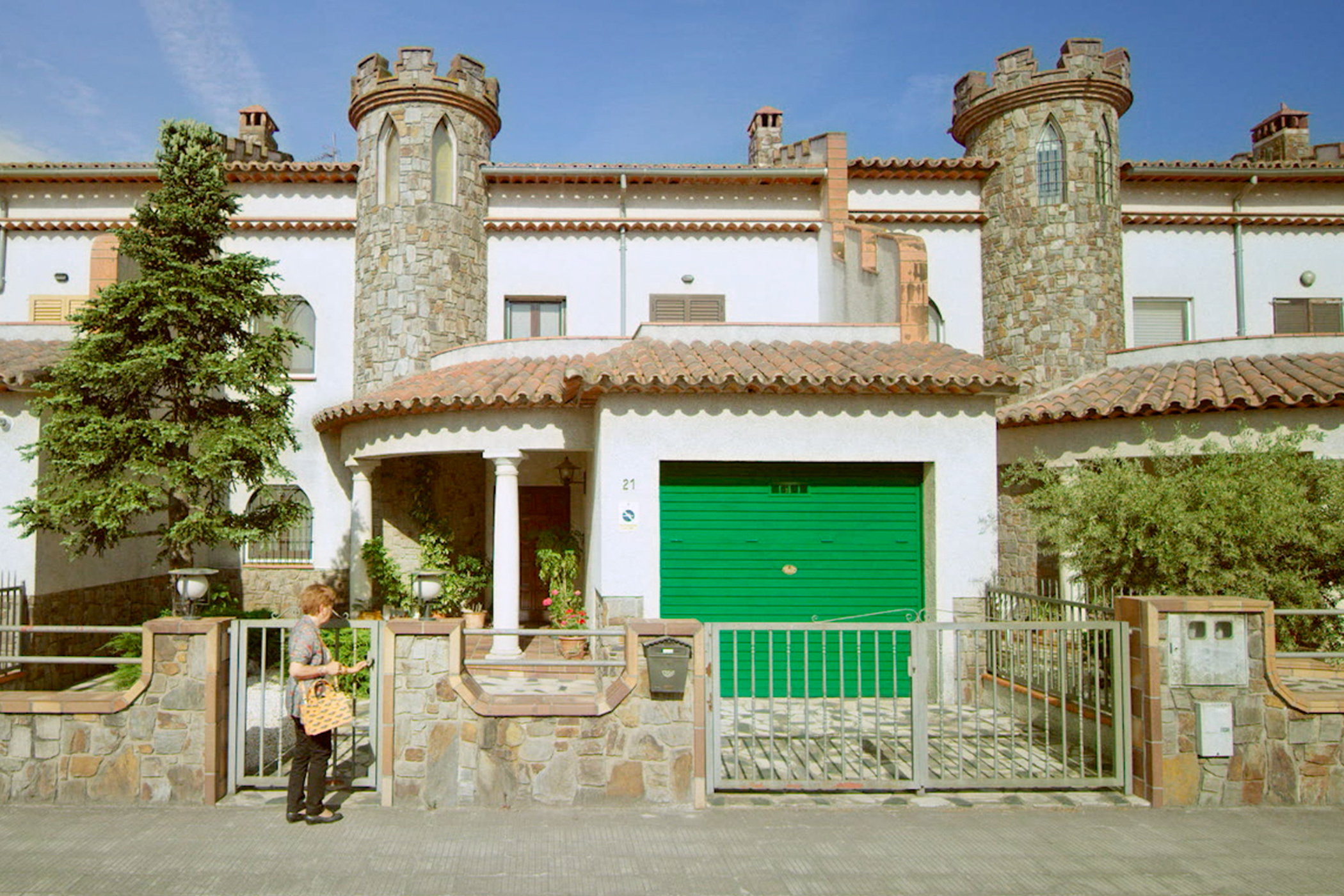
Cardedeu, an old village located 45 km from Barcelona, experienced a significant suburban development during the Spanish real estate boom of the 1990s. The Real Estate Boom House, owned by Jaume and Maria Lluïsa, can be considered paradigmatic of the aesthetic fostered by this financial phenomenon for at least three reasons—
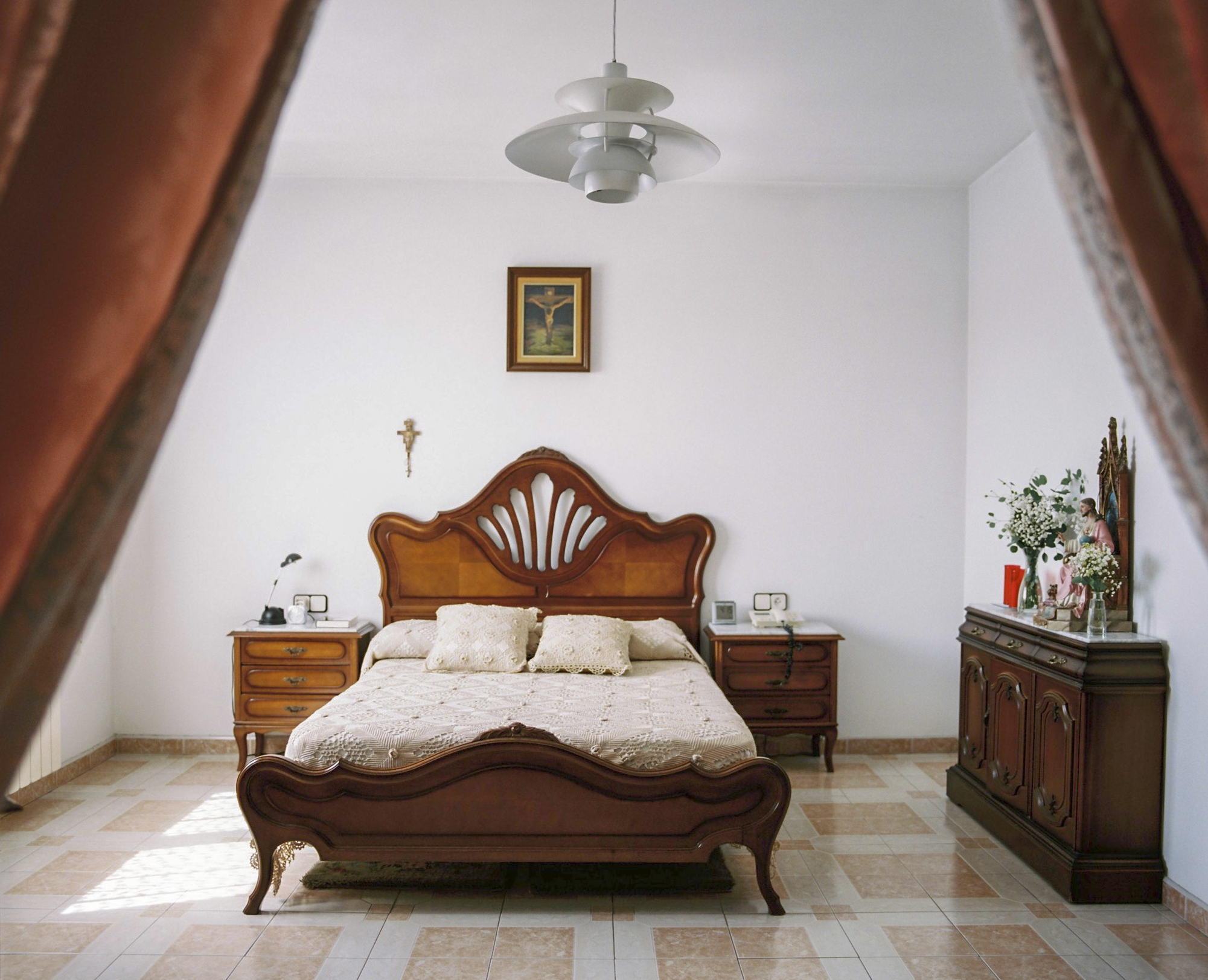
Original state. Jaume and Maria Lluïsa's Bedroom, first floor. Photo by Adrià Cañameras
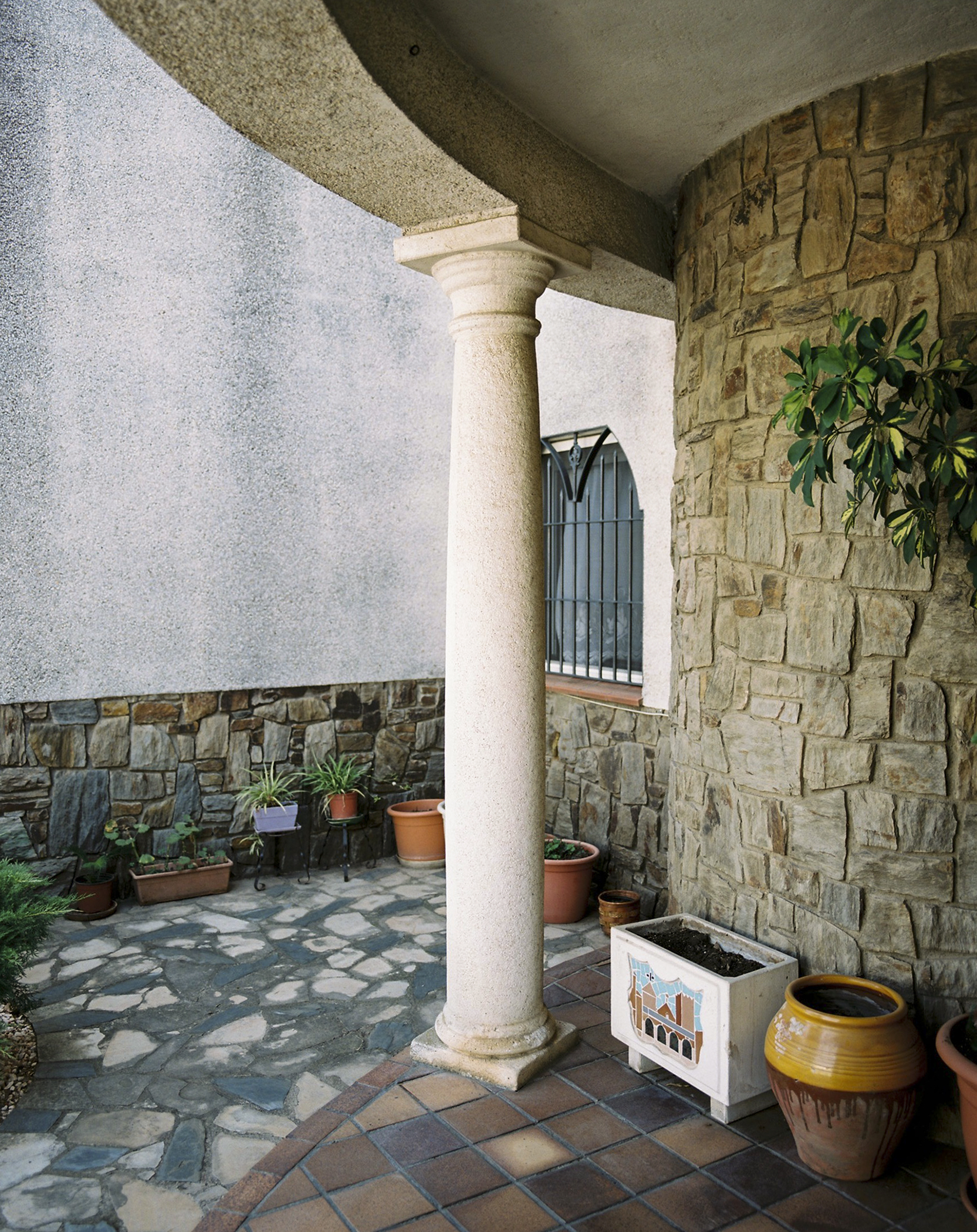
Original state. Entrance porch, ground floor. Photo by Adrià Cañameras

Original state. Entrance door, ground floor. Photo by Adrià Cañameras
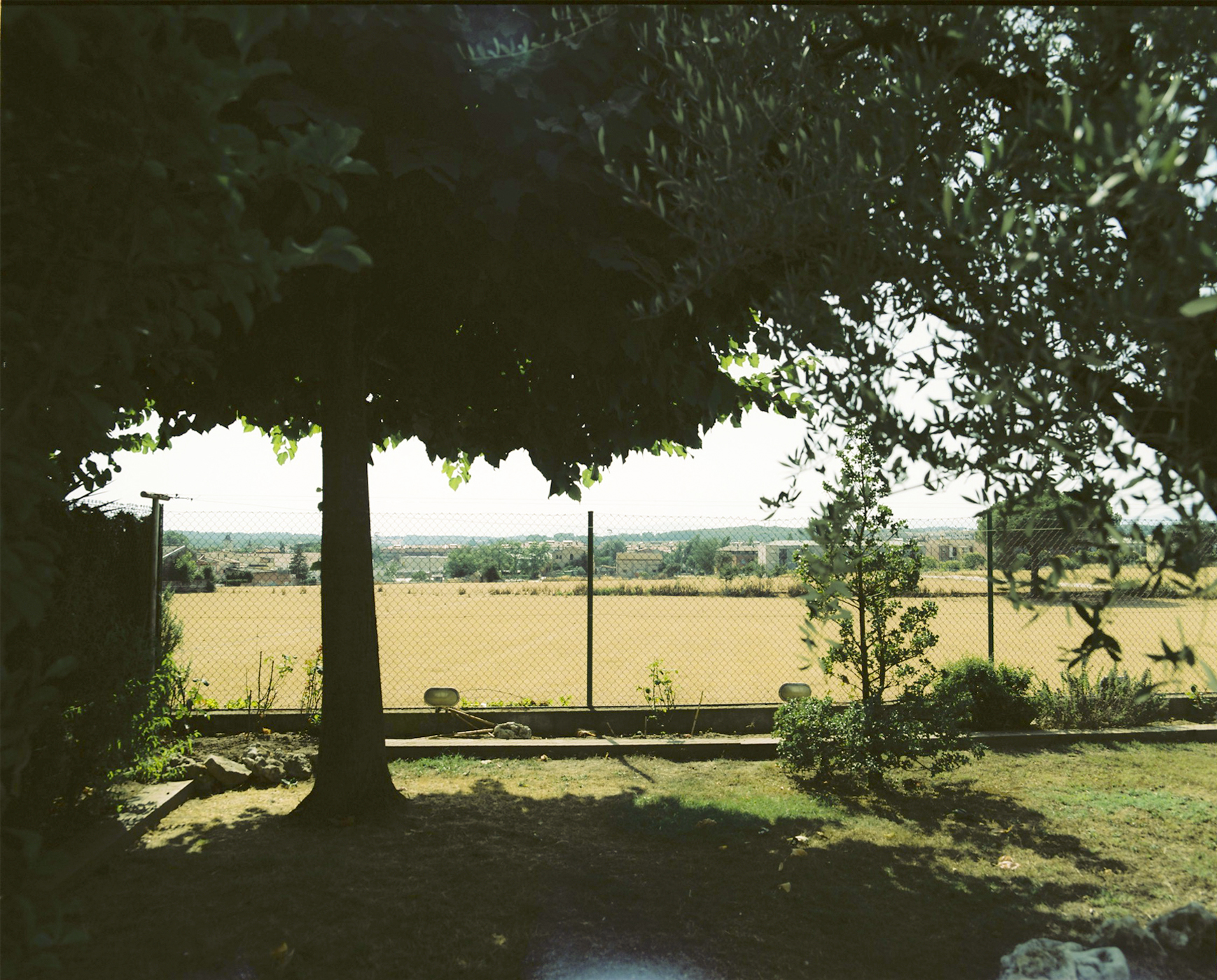
Original state. Backyard garden. Photo by Adrià Cañameras
First, the house’s original design, materials and construction details reveal the imaginaries of opulence that drove part of real-estate-boom design in Spain: the staircase of the house is located inside a crenel-crowned tower with lancet arch windows; the entrance verandah is supported by prefabricated, casted Doric columns; the hall and the staircase are covered in mass-produced Andalusian tiling.
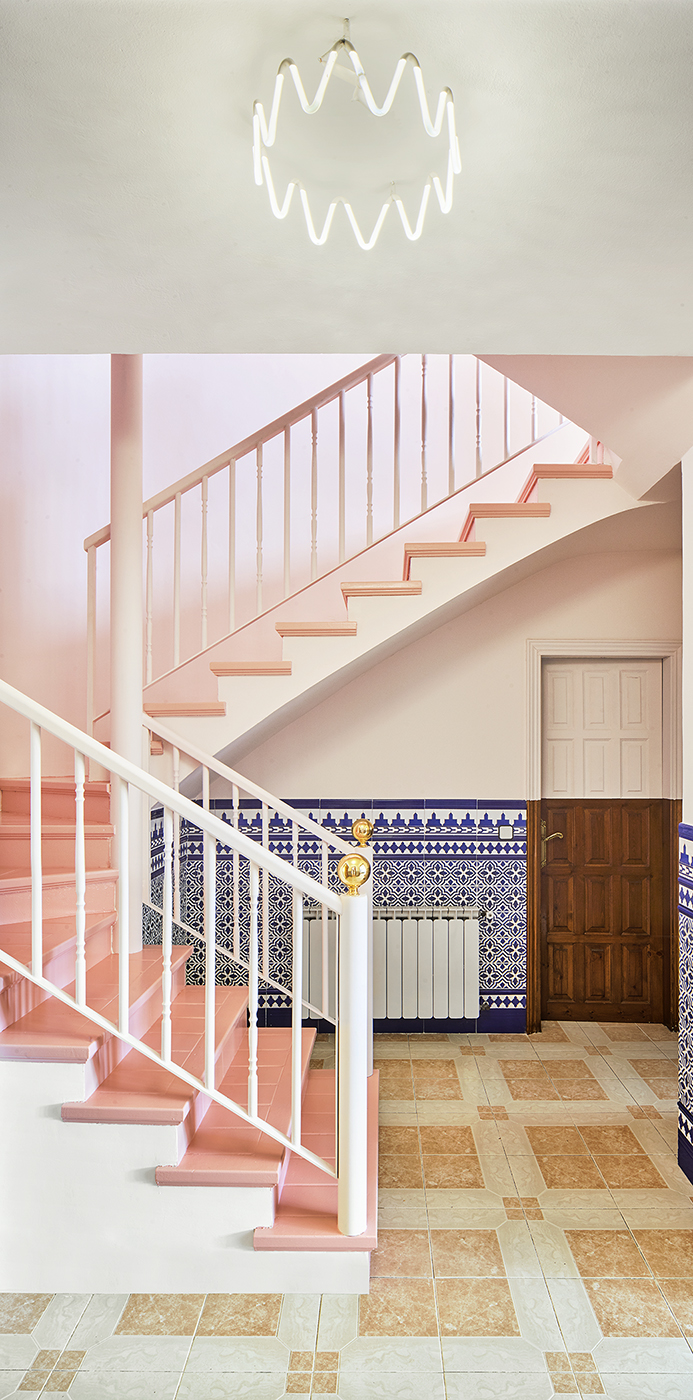
Entrance hall. First floor. Photo by José Hevia
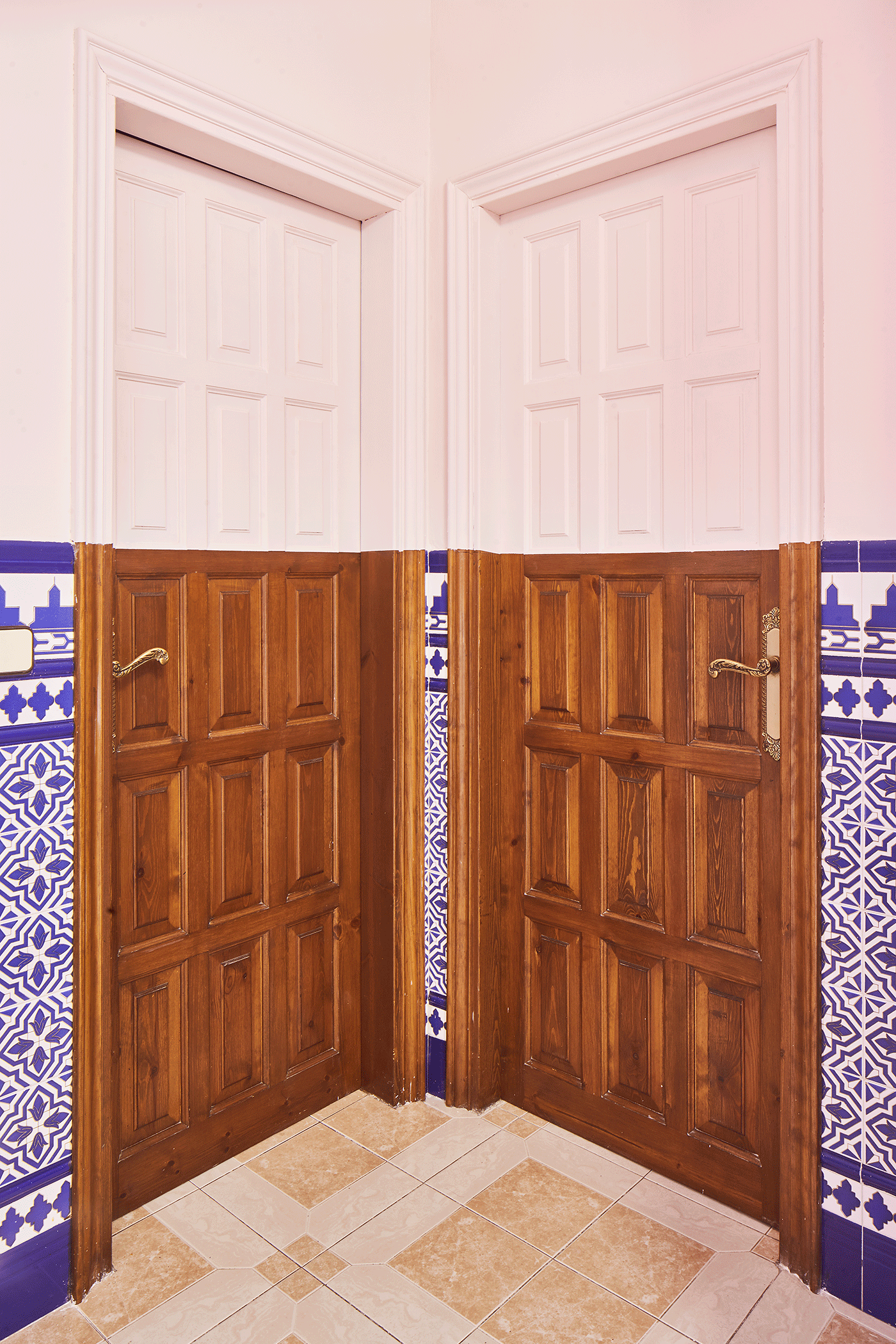
Detail of the doors' finishing in the entrance hall, reinforcing the Andalusia tiling basement
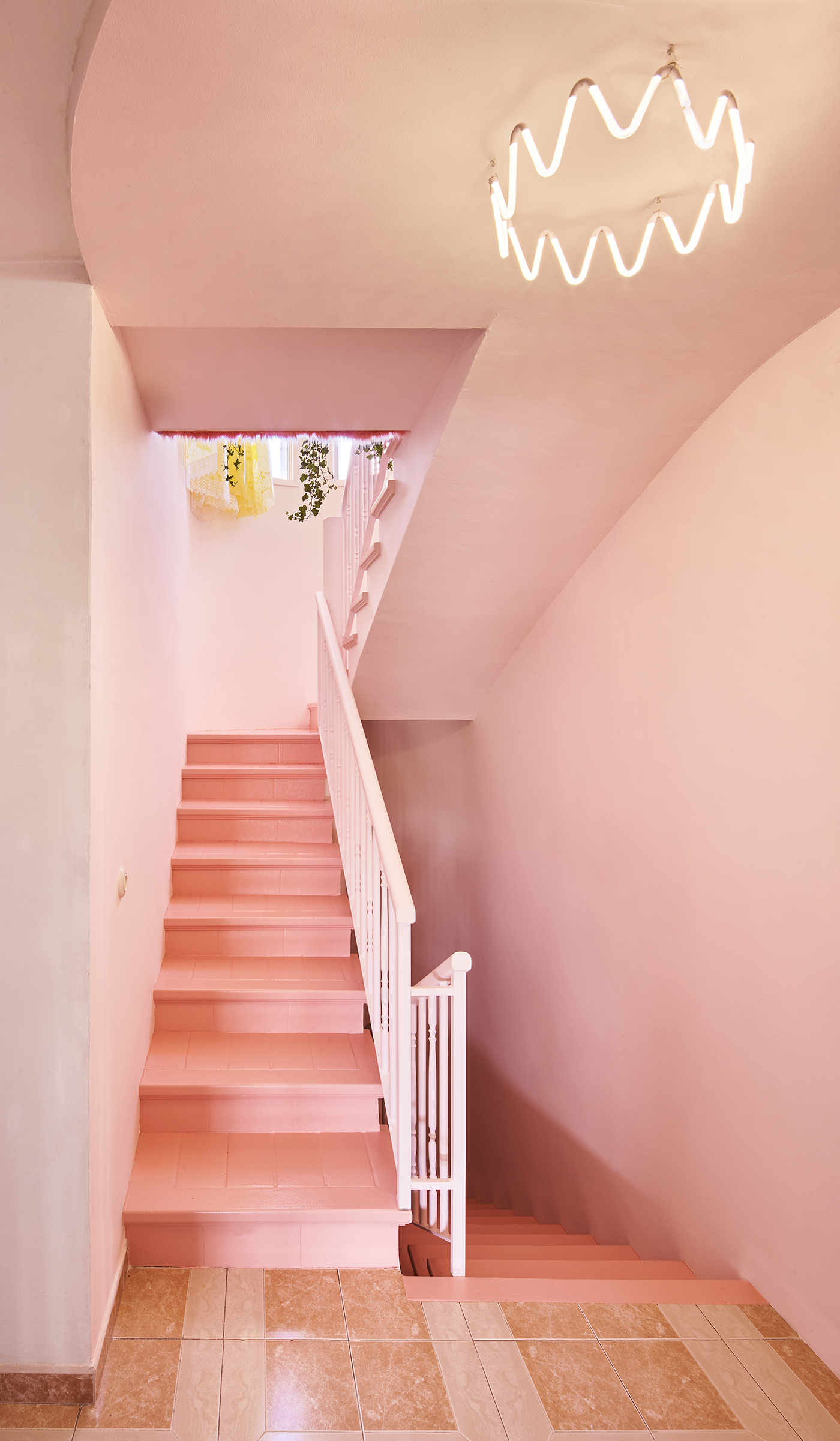
Second floor. Photo by José Hevia
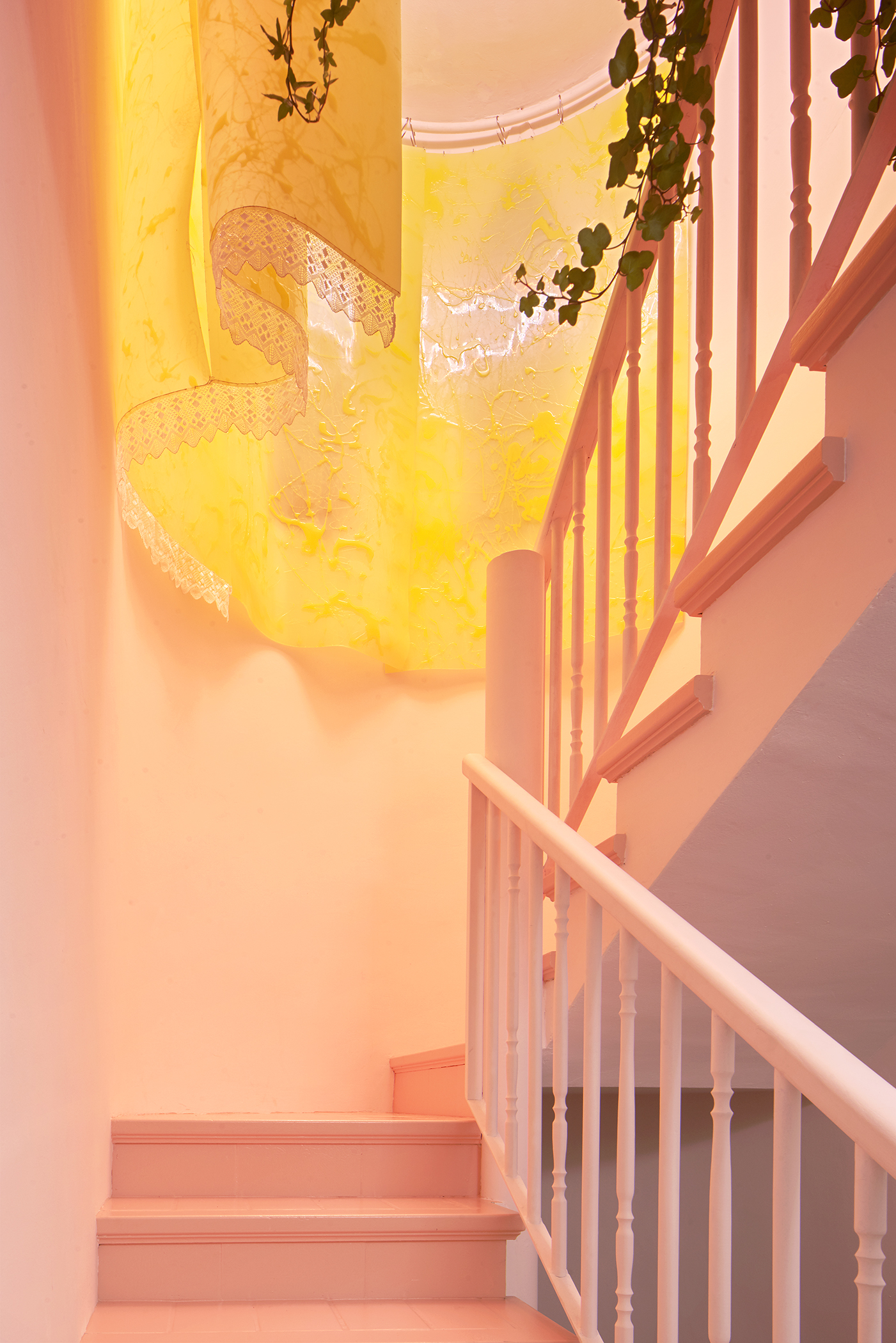
Stair lift with polyurethane curtain. First floor. Photo by José Hevia
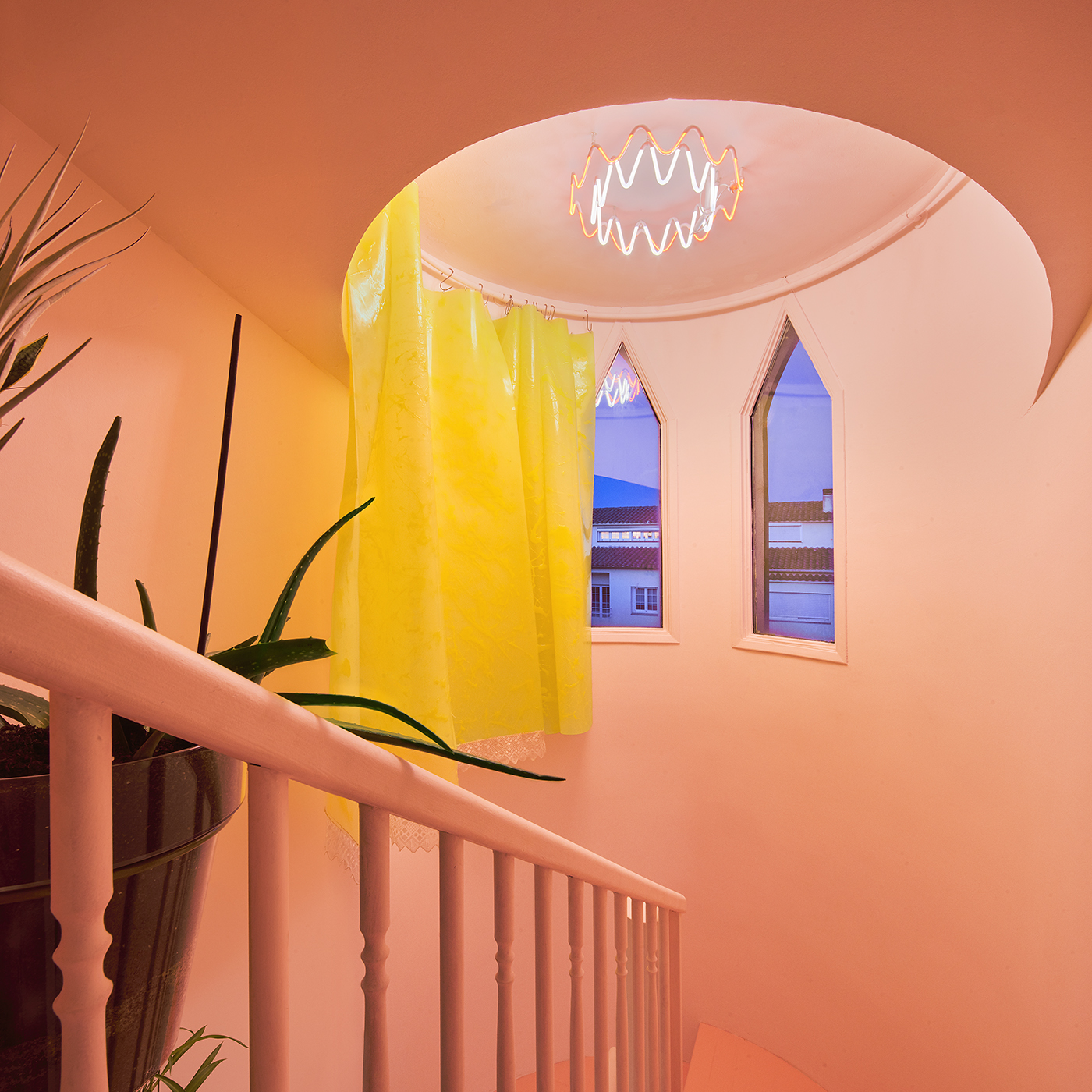
Detail of the preexisting neo-gothic windows. Second floor. José Hevia
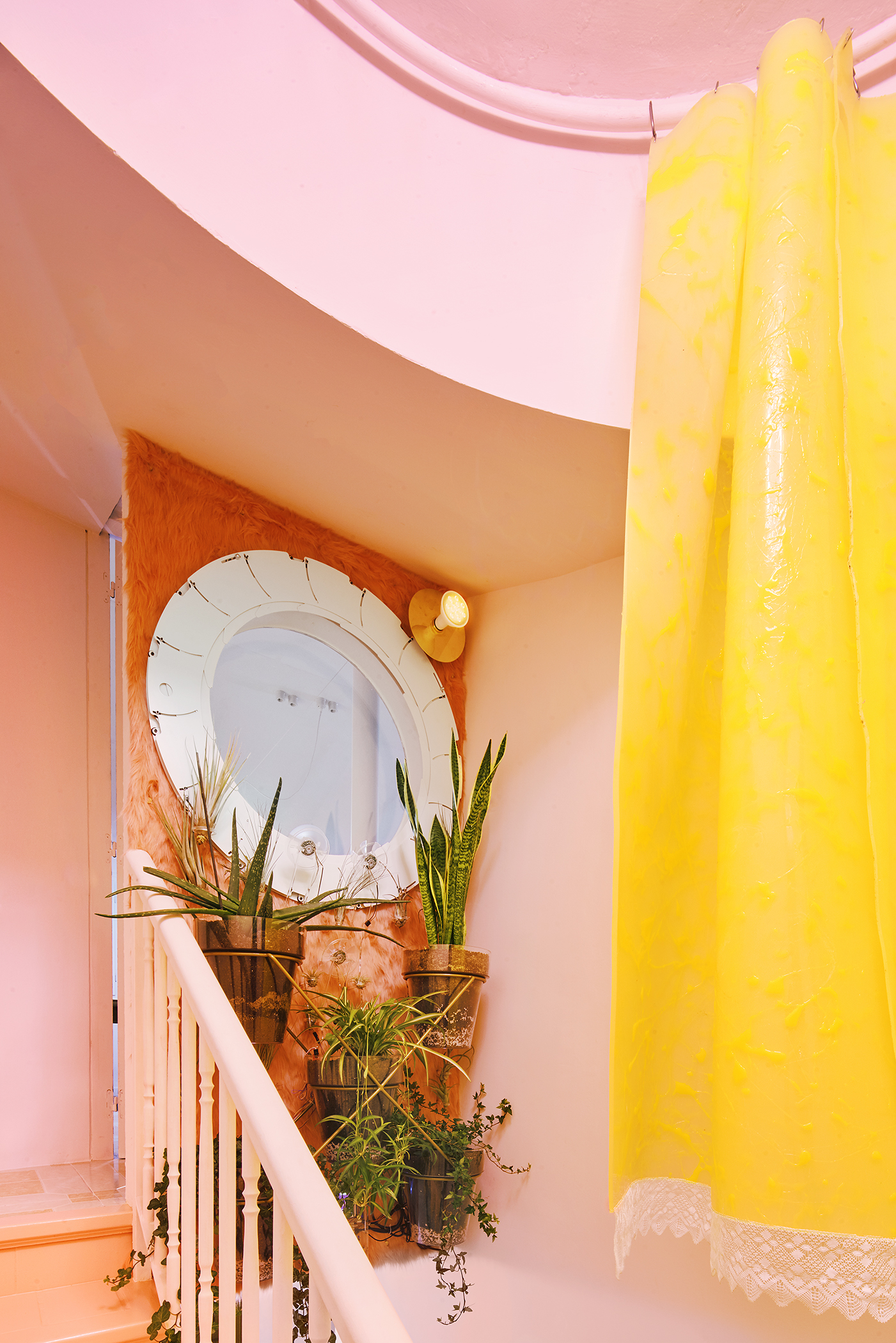
Detail of the automatized interior garden, and the bull's-eye window. Photo by José Hevia
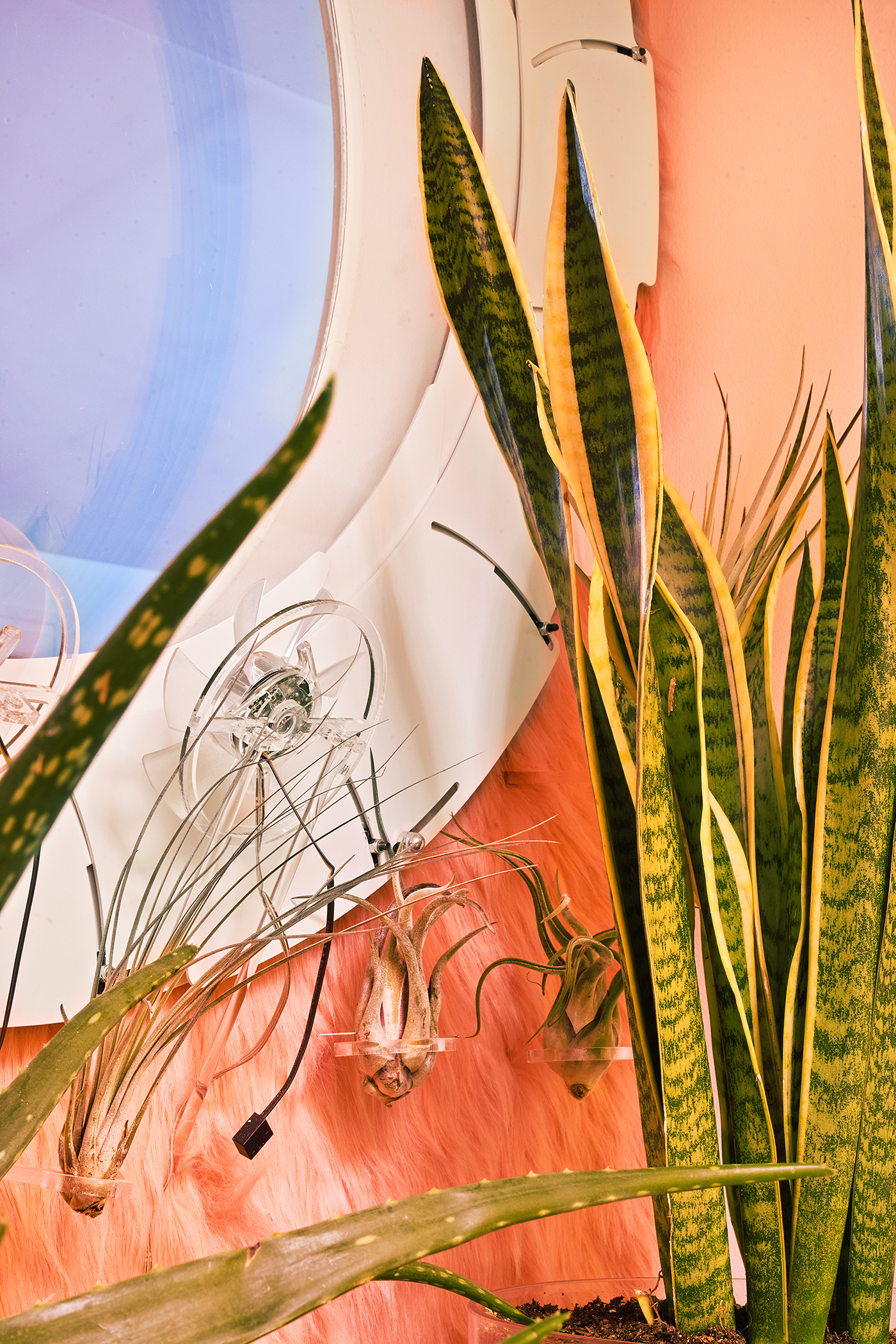
Detail of the automatized Calypso system. Second floor. Photo by José Hevia
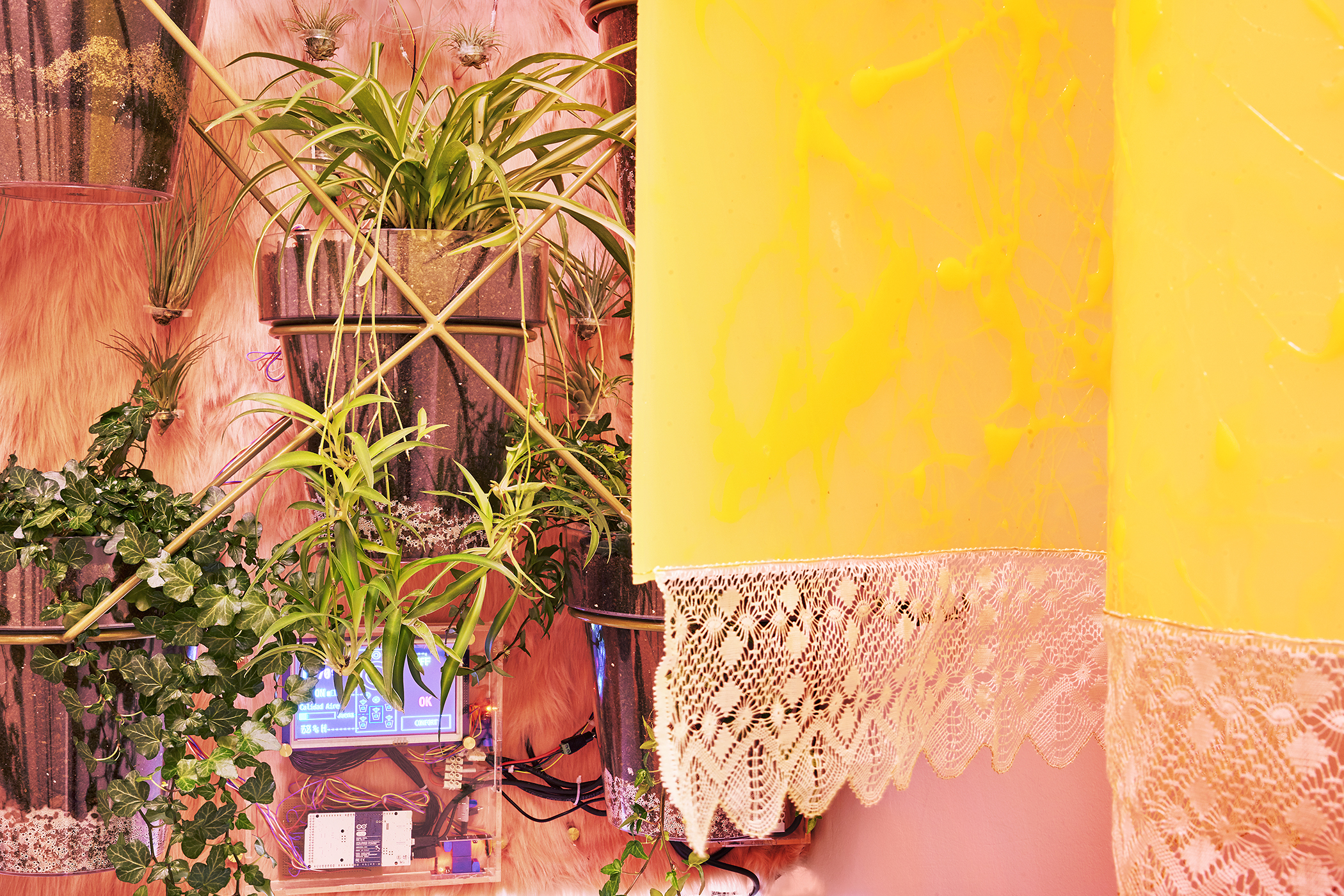
Detail of the screen of the automated Calypso system and the Dyneema bobby-lacing finishing off the polyurethane curtain. Photo by José Hevia
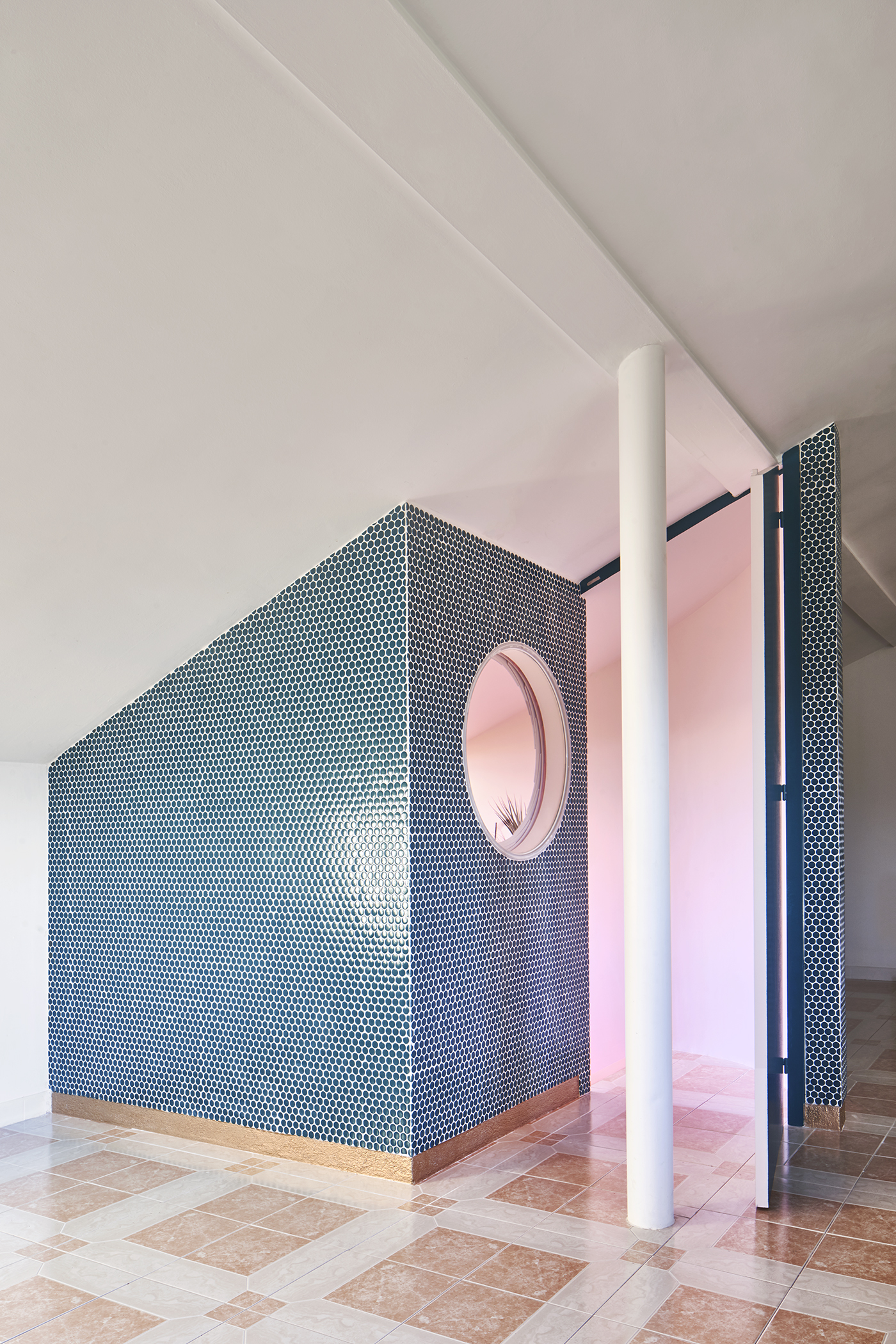
Staircase enclosure. Second floor. Photo by José Hevia
Second, the privileged views over the old town from the house’s back façade, at the edge of a suburban area and cow fields, are under continuous threat: once the country experiences an economic recovery, the fields will probably be urbanized.
And third, the house’s domestic interior attests to the radically different generational sensitivities that have constituted the boom. In the interior of the Real Estate Boom House, large amounts of traditional, Castilian craftwork produced by Maria Lluïsa, which recall the rural origins of the family, are placed alongside signature design objects acquired per the suggestion of Maria Lluïsa and Jaume’s sons.
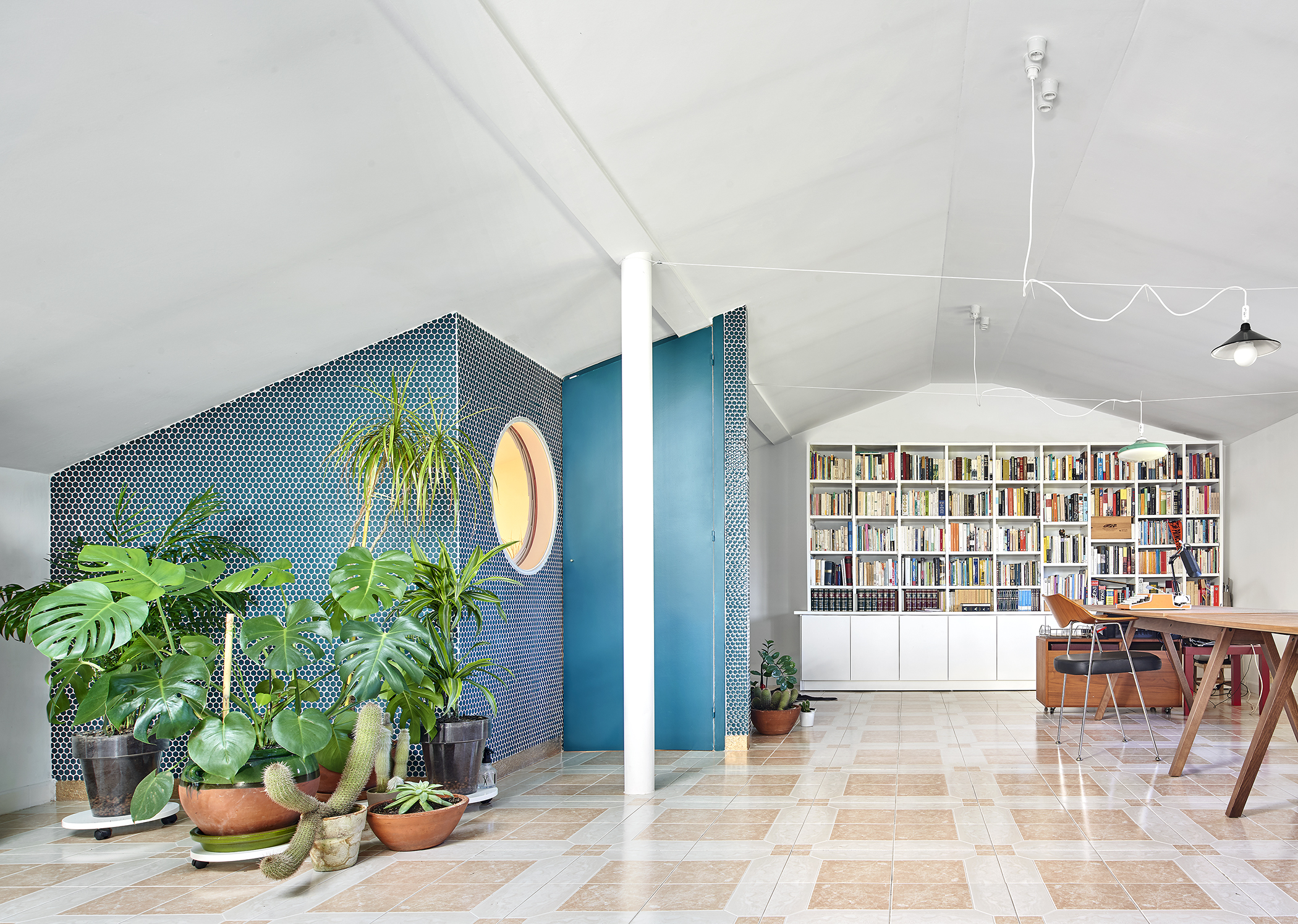
Studio. Second floor. Photo by José Hevia
The intervention attempts to highlight these three conditions through a single operation. The staircase was archaeologically restored using old Castilian craft techniques mixed with new technologies that highlight the original materials and details. As if they were ruins, these boom remnants are filled with plants to serve as a substitute to the house’s endangered back views of the fields, soon to disappear.
At a moment when Spanish economy has recovered to a 2008 pre-crisis level, discussions on the alliance between real estate practices and architecture has resurfaced in Spain. Inscribed within this context, the Real Estate Boom House seeks to intervene in—rather than erase, ignore or hide— the legacy of this alliance.
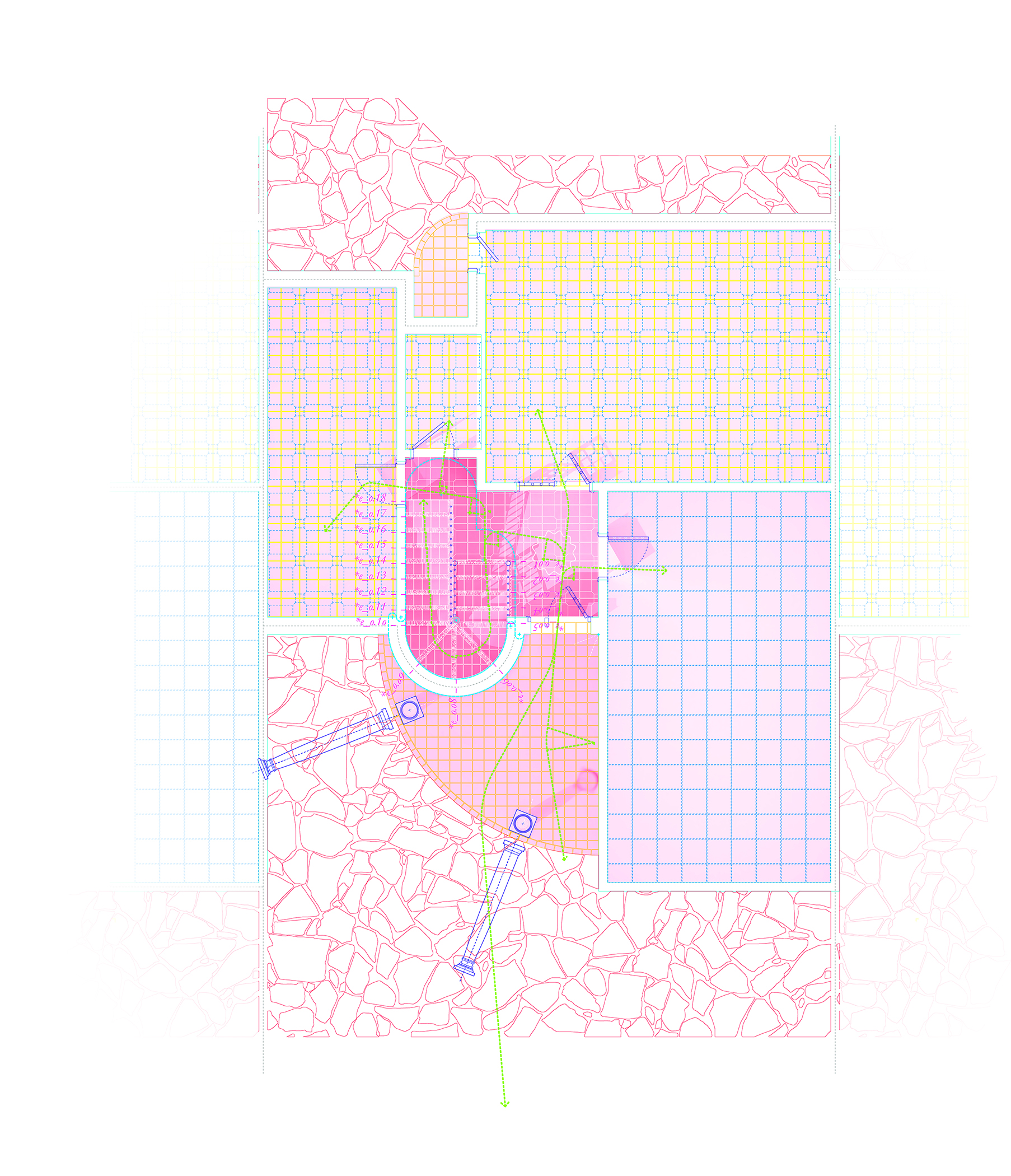
Ground floor
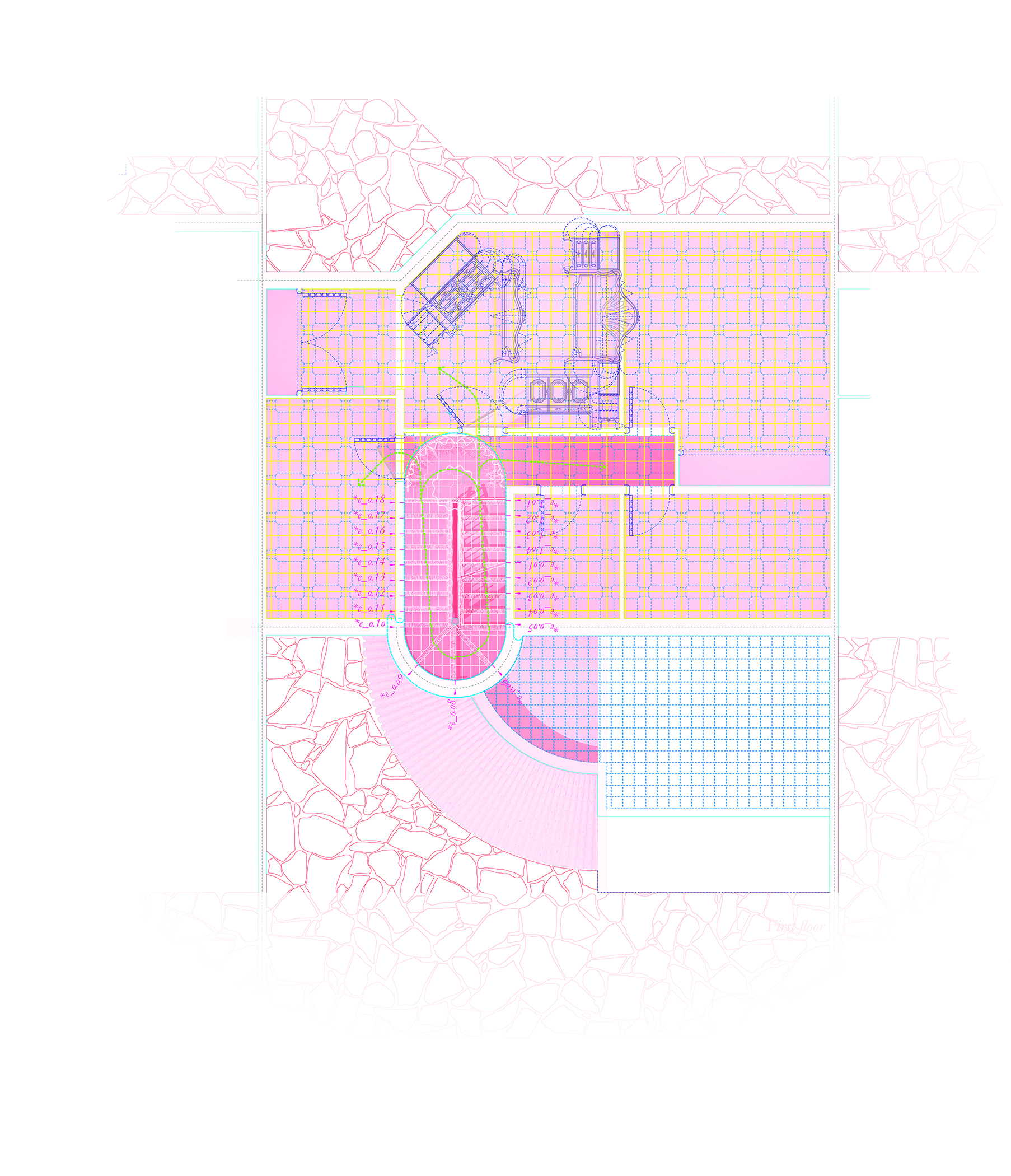
First floor
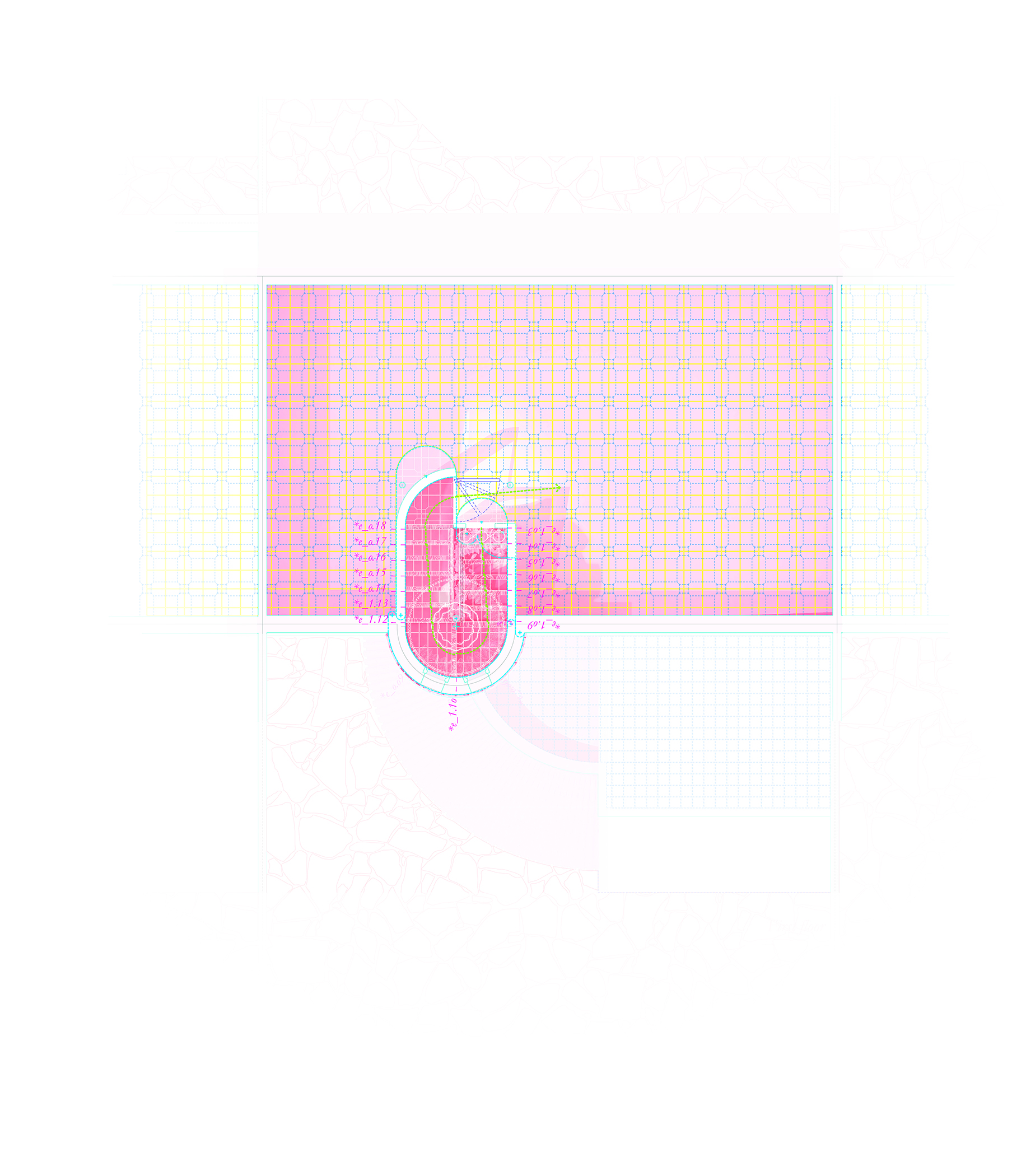
Second floor
The Real Estate Boom House includes a spin-off project, which looks to counter the real-estate-boom aesthetics through the unearthing of under-recognized architectural genealogies and agents edited out from modern disciplinary discourses. It attend to notions of craftsmanship and DYI construction such as the production of textiles in domestic space––a gendered form of labor usually overlooked in male-centered architectural narratives. I have worked closely with Maria Lluïsa Blanco, the client, on the production of a curtain prototype developed using ancient bobby lacing techniques to weave high-resistance, state-of-the-art fiber Dynemaa®, commonly used in military equipment.
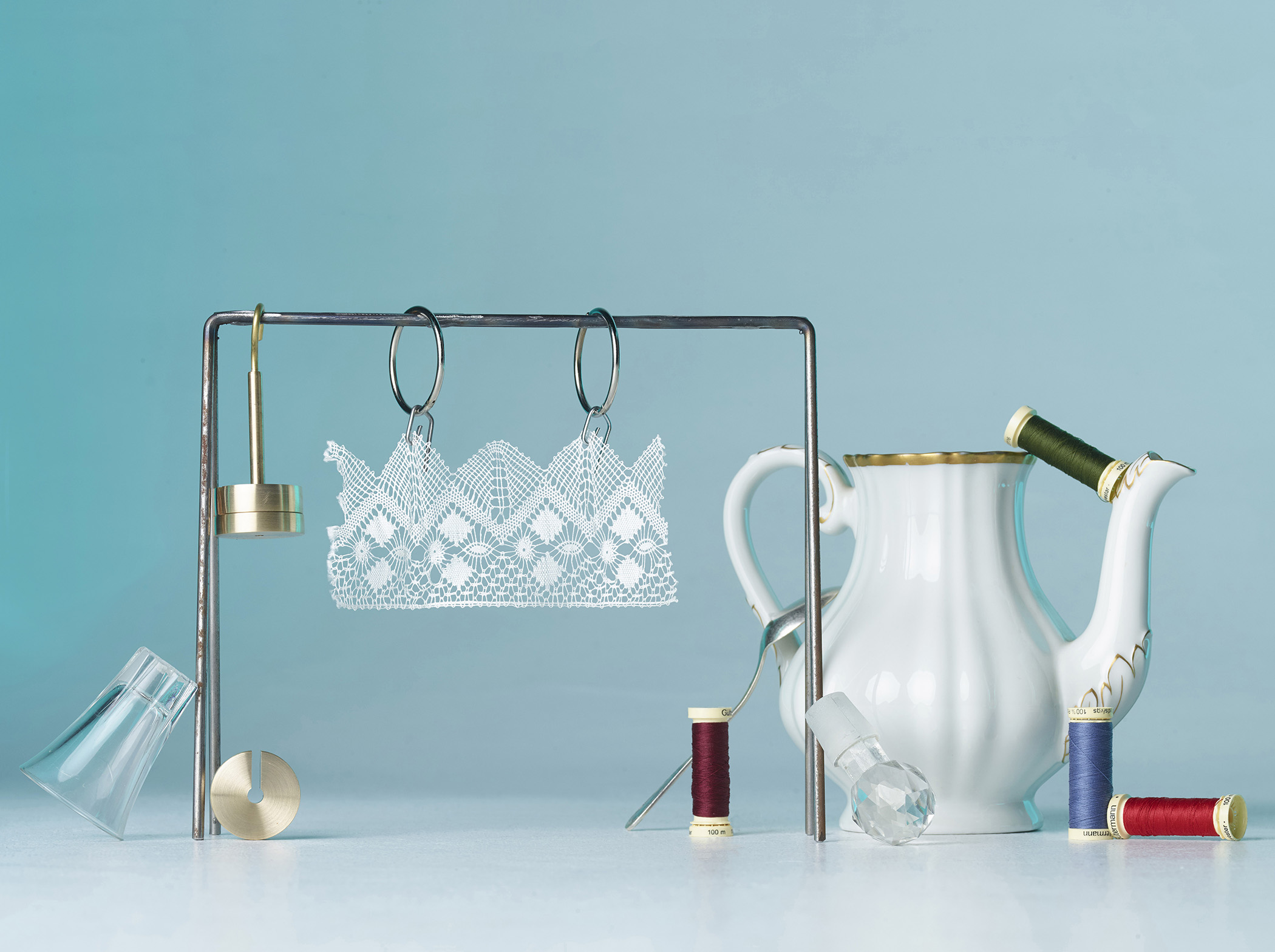
Prototype #1. Sewn by Maria Lluïsa Blanco. Photo by Pol Rebaque
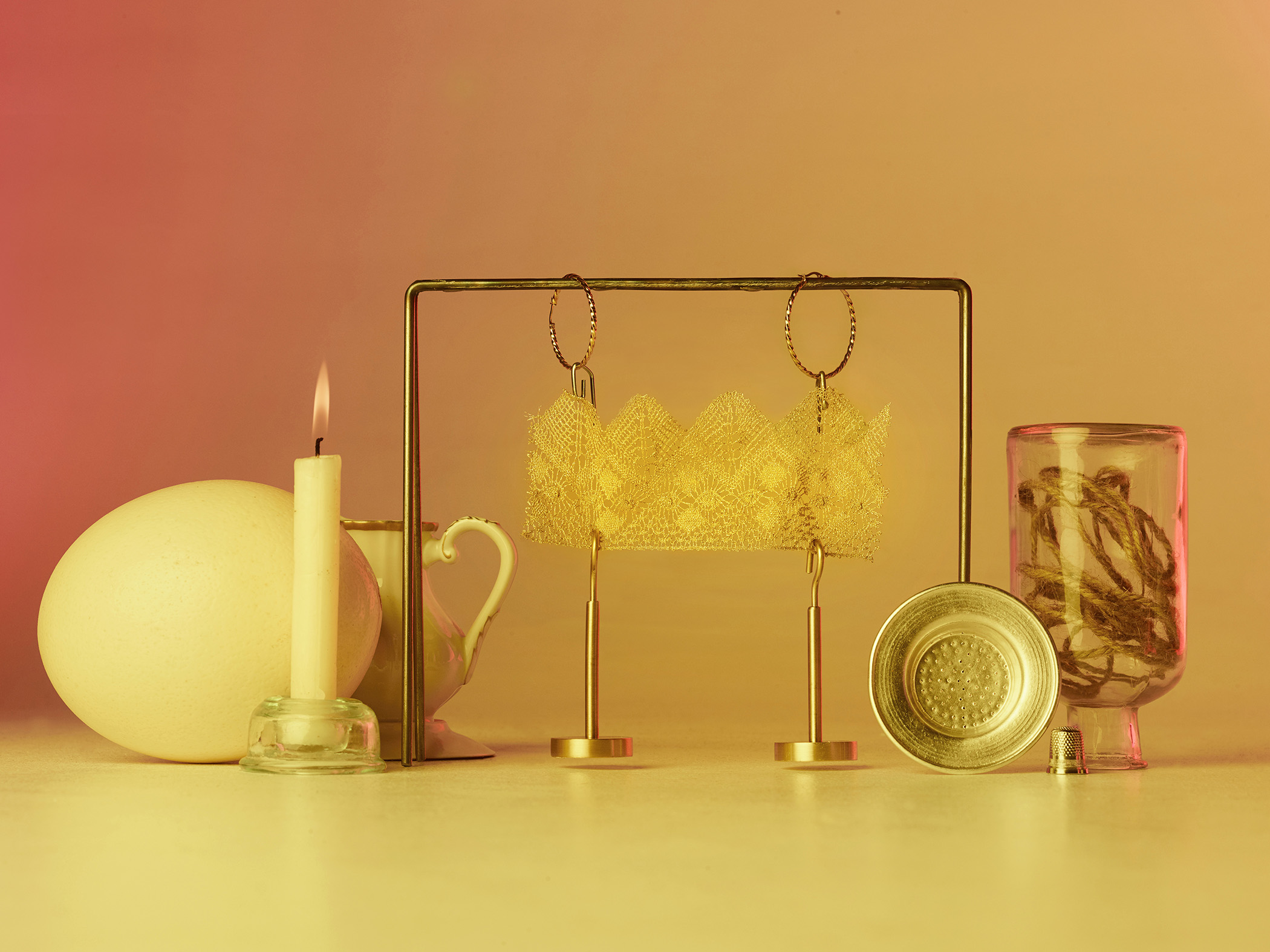
Prototype #2. Sewn by Maria Lluïsa Blanco. Photo by Pol Rebaque
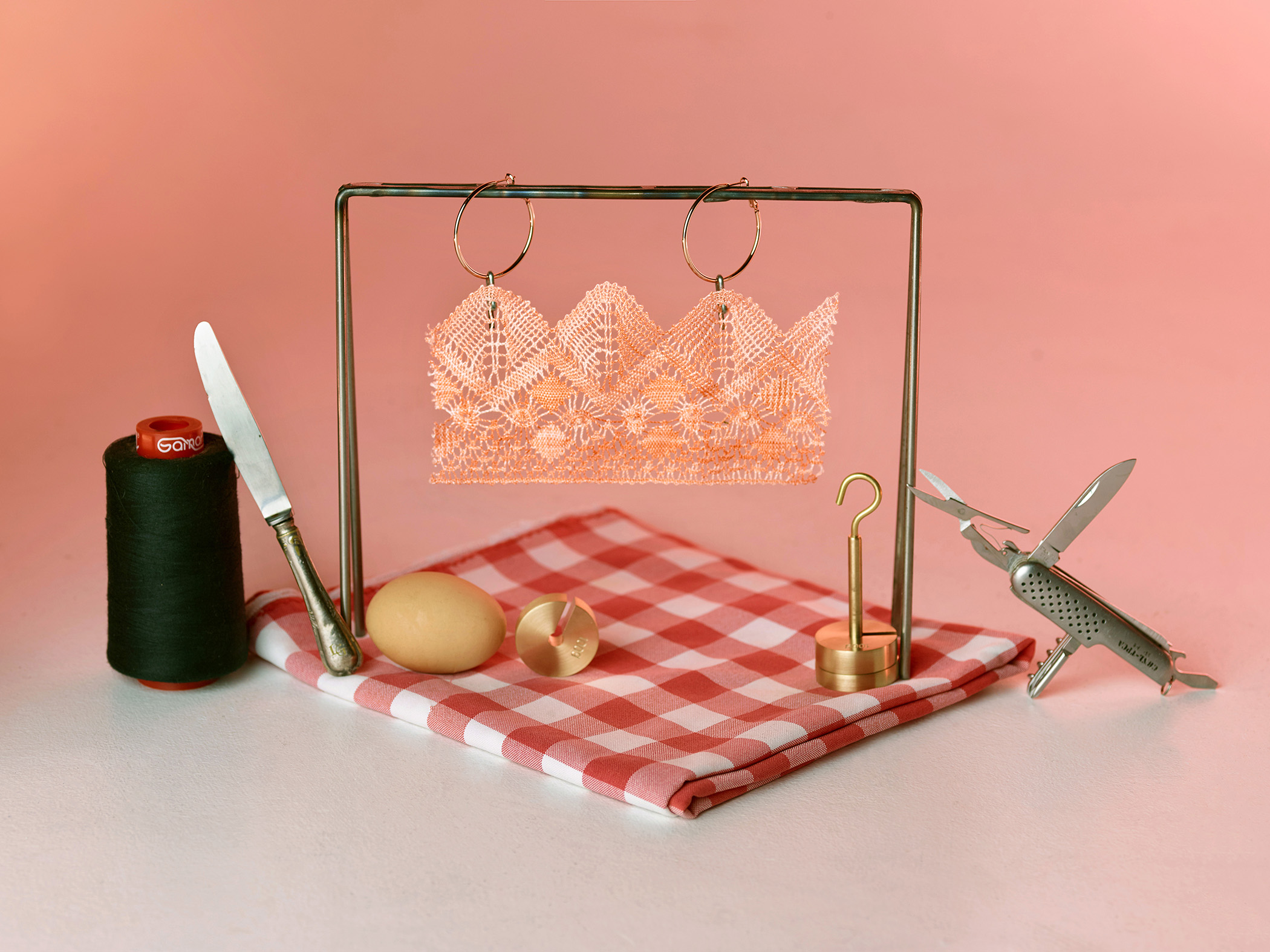
Prototype #3. Sewn by Maria Lluïsa Blanco. Photo by Pol Rebaque
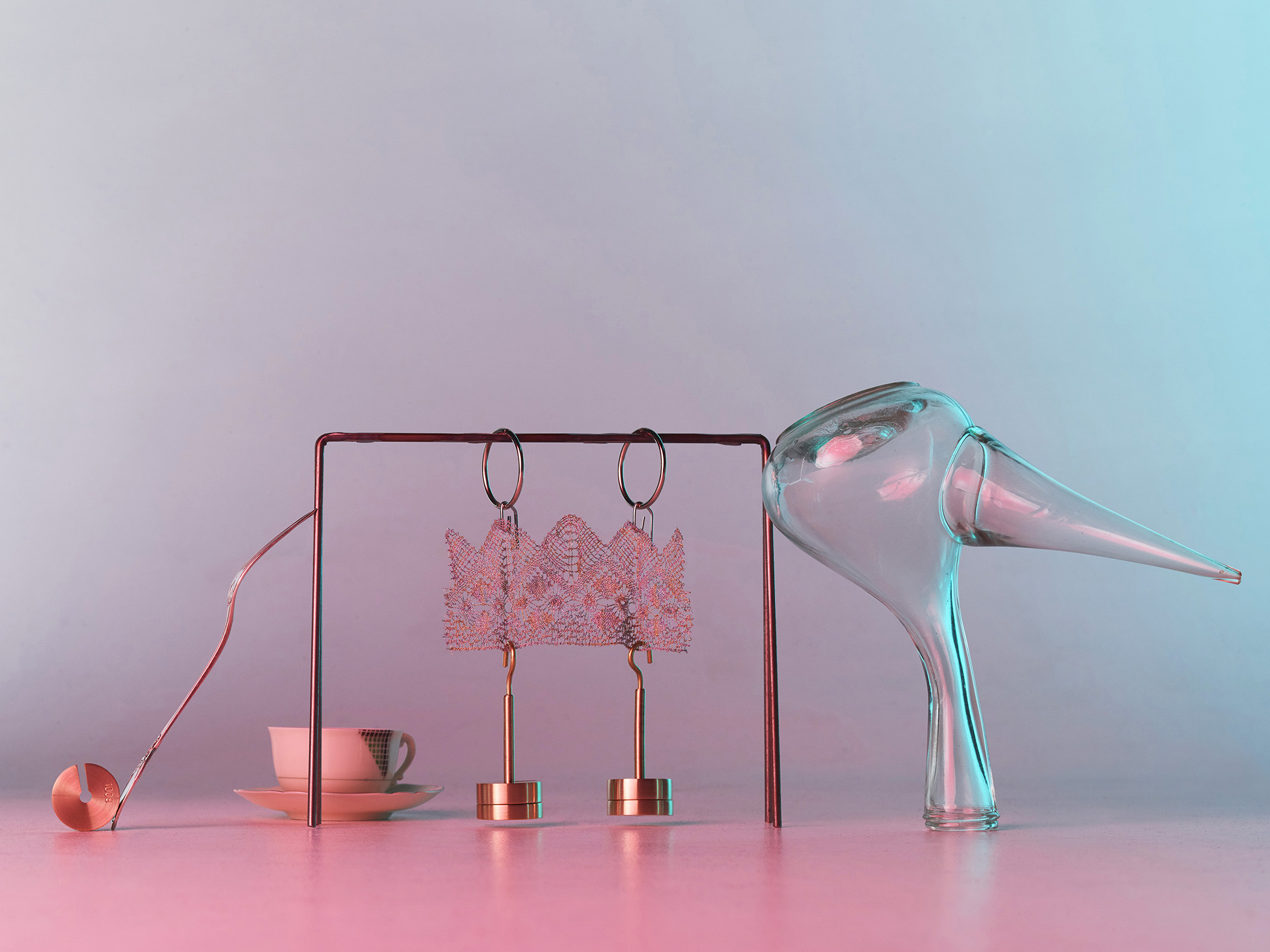
Prototype #4. Sewn by Maria Lluïsa Blanco. Photo by Pol Rebaque